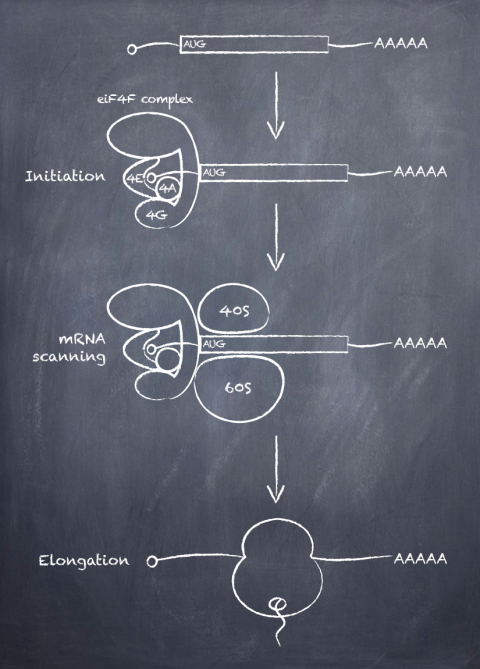
Viral control of translation
Viruses depend on their host for the production of their proteins. Which mechanisms enable viruses to manipulate the cellular protein synthesis machinery?
A successful viral infection requires the coordinated synthesis of viral proteins, many of which are produced in high quantities to accommodate virion assembly. This massive demand for active translation imposes an inherent need for viruses to commandeer the host protein synthesis machinery. To accomplish this task, viruses employ diverse strategies resulting in the enhancement or inhibition of cellular protein synthesis, ultimately favoring the translation of viral transcripts. Among the numerous host factors required for translation, viruses often target those responsible for translation initiation, the rate-limiting step of protein synthesis. Our previous studies on the control of translation by the Kaposi’s sarcoma-associated herpesvirus (KSHV) showed that the virus promotes assembly of the eukaryotic initiation factor 4F complex (eIF4F), and activates components that favor viral translation during productive infection (1). Some of the strategies used by KSHV are conserved in other members of the herpesvirus family and, remarkably, we have also shown that they are conserved in non-related viruses, such as Vaccinia virus (2). We strive to further our understanding of the contributions of each component of the translation initiation complex to viral protein synthesis, and the viral factors responsible for their modification.
Researchers

Oran Donohue
Oran was a M.S. student investigating the piracy and manipulation of the ZIKA virus in relation to translation initiation, particularly with regard to differential expression of the components of eIF4F.
He is currently a Research Associate at Capsida Biotherapeutics


